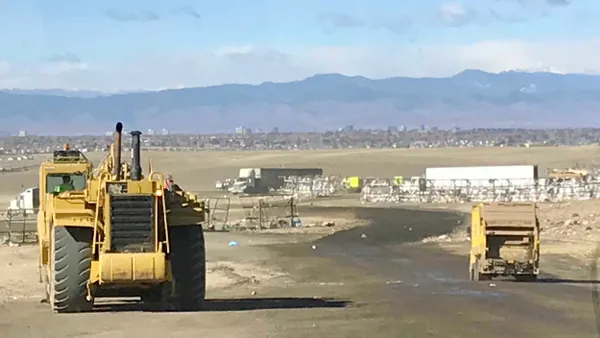UPDATE Dec. 13, 2017: Mayor Bill de Blasio announced that the city will fund a $350,000 study "to find out the truth" about potential health effects from the closed Fresh Kills Landfill, with a specific focus on cancer and asthma, as reported by the Staten Island Advance. The study is set to begin "immediately" and will be complete by the end of 2018.
This news came at a town hall hosted with Council Member Joseph Borelli Dec. 12. De Blasio credited Borelli for his advocacy and said the decision was made after the city's Department of Health and Mental Hygiene determined it didn't have the necessary information to address residents' concerns.
"We all know the history of Fresh Kills and we all know the unfairness. But beyond the unfairness of the past was the question of whether there was a negative impact on people's health in the surrounding communities," said de Blasio. "I can pledge to you in front of everyone, whatever we learn from it, whatever we need to do to protect the health of people, we'll be ready to do it."
Dive Brief:
- Two New York council members from Staten Island are calling for a study of potential links between the closed Fresh Kills Landfill and higher rates of illness among area residents, as reported by DNA Info. According to a preliminary report released by Councilman Joseph Borelli, anecdotal evidence shows area residents may have higher rates of cancer and birth defects than other city residents.
- Borelli, and fellow Councilman Stephen Matteo, are calling for $500,000 to fund a new study conducted by either the Department of Health or the City University of New York. The study would focus on residents who lived within five miles of the site before it closed in 2001. One potential funding source is the money generated by gas capture at the site.
- The goal is to include this funding in the upcoming FY18 budget that is currently being negotiated. Mayor Bill de Blasio recently spoke to Borelli about the proposal and said he takes the issue "very seriously," as reported by the Staten Island Advance.
Dive Insight:
The 2001 closure of Fresh Kills may have set off ever-rising waste export costs for the city, and spurred the creation of multiple private transfer stations in other boroughs, but it was very welcome news to Staten Island residents. Created in 1948, the site eventually became the largest active landfill in the world and was considered a notorious blight by the community. The city did study its health effects in 1997, but the results were seen as inconclusive and this was also before the site received debris from the September 11th World Trade Center attack.
Since then, the Fresh Kills Landfill has been renamed Fresh Kills Park and is on its way to becoming a 2,200-acre open space for public use by 2036. Limited access for kayaking and biking is already available and Staten Islanders will eventually have bragging rights to a site nearly three times the size of Central Park. Yet if Borelli's assessment is accurate, lingering health effects for those that grew up or grew old near the former landfill will still be an issue.
While $500,000 for a study may be a small amount in the city's proposed $84 billion budget, potential costs could become much higher depending on what that study found. As seen with numerous closed landfill sites around the country, local governments and companies can sometimes end up paying millions to residents for adverse health effects or related property issues. The transformation from Fresh Kills to Freshkills Park has been touted as a model for what is possible with closed landfills around the world, but the site may not be immune to the same legacy challenges of others that have come before it.









